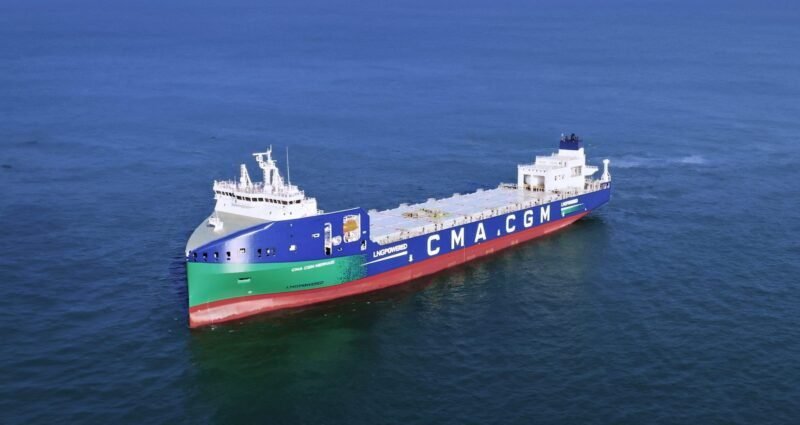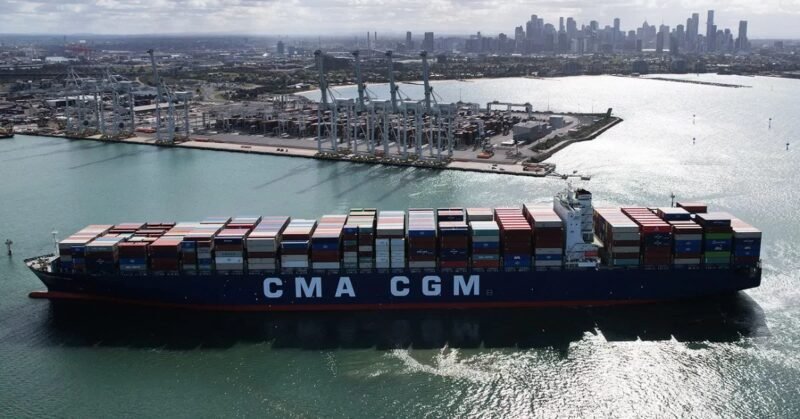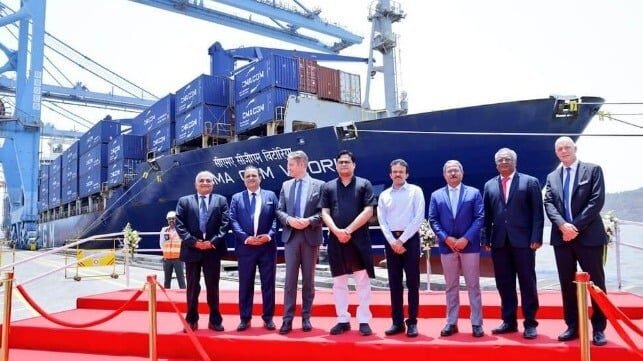French shipping company CMA CGM has acquired the CMA CGM Mermaid, the first of ten 2,000 TEU container ships powered by liquefied natural gas (LNG) for use in the Mediterranean and Northern Europe. These ships are designed to improve energy efficiency and environmental performance, emitting 20% less CO2 compared to similar-sized ships using conventional fuels. This investment is part of CMA CGM’s fleet renewal program, aiming to achieve net zero carbon emissions by 2050 with an investment of over $15 billion.
Developed in collaboration with Chantiers de l’Atlantique, Odense Marine Technique, and Hyundai Mipo Dockyard, the new ships feature a novel ship architecture with a gas chain and storage tank with a total capacity of 1,053 m3. They also have forward superstructures for better aerodynamic performance and increased cargo capacity. Additionally, the ships have a straight bow with integrated bow bulb to improve hydrodynamic performance and reduce fuel consumption by 15%.
By using LNG as a marine fuel, the new container ships can significantly reduce sulfur oxide, nitrogen oxide, and particulate matter emissions. They are also designed to transport biogas and can be converted into e-methane, further reducing CO2 emissions. The vessels are scheduled for delivery between February 2024 and January 2025 and will primarily transport goods over short distances in Northern Europe and the Mediterranean, providing a more energy-efficient alternative to road transport in these regions.


















